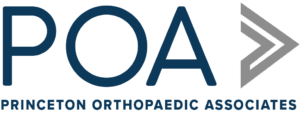
Book An Appointment
Physician Assistants
Physical & Occupational Therapists
KneeMRI ScansNon-OperativePhysiatry
Physical Therapy
Podiatry
Spine
Sports Medicine
TraumaUrgent Care
X-Ray Imaging

Spinal stenosis is a condition in which the spinal canal or tunnel that houses the neural elements (neurons) that travel down the spine is narrowed. Central narrowing refers to the main channel, while foraminal narrowing refers to each nerve root's "exit ramp." The condition can affect the cervical (neck) or lumbar spine (lower back).
Spinal stenosis occurs when the spinal canal constricts, putting pressure on the nerves. Pressure on the nerves causes discomfort, numbness, or weakness in the extremities. Cervical (neck) stenosis can cause pain in the arms, legs, and balance. Lumbar (low back) stenosis most frequently affects the buttocks and legs, making it painful to walk and stand.
Spinal stenosis affects your neck or lower back, although it might also affect other areas of the spine. Not everyone experiences symptoms, but they are generally similar to those listed above if you do.
More specific symptoms include:
If you are experiencing a loss of bladder or bowel control, call your doctor immediately.



Stenosis happens when the spinal discs become inflamed and collapse, causing a narrowing or blockage in one of the spaces between them ( stenosis ). In rare cases, it might be caused by a tumor, infection, or congenital abnormality (present at birth).
Stenosis can be hereditary or develop later in life. It may also be caused by arthritic changes in the facet joints and disc narrowing between the spine bones, which cause excessive ligament development. Scoliosis or a curved spine can also produce it. One vertebra slipping on the next, or one vertebra being scoliotic or curved, can all cause spinal stenosis.
Stenosis is most common among individuals in their 50s and older who have arthritic changes to the spine. Developmental or hereditary stenosis affects people in their late teens or twenties and above.
Anti-inflammatory medications and activity modification can treat the early symptoms of stenosis. When symptoms become more severe, epidural steroid injections might be tried. Spinal decompression surgery may be required if none of these treatments work. Depending on the cause of the stenosis and where it is, spinal fusion surgery may also be required.
